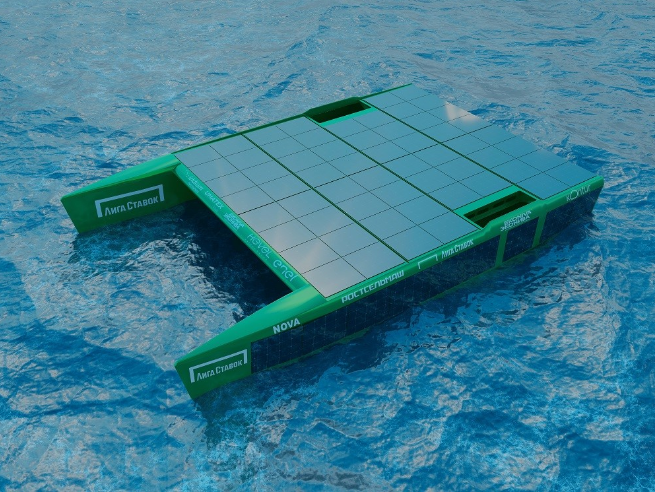A catamaran designed by English racer and engineer Phil Morrison and set to undertake a 100-day solo transatlantic trip from Chile to Australia will be exclusively powered by a PV power generator.
The boat will be helmed by Russian adventurer and survivalist Fedor Konyukhov in a first-ever solo transpacific 9,000 nautical mile expedition from Chile to Australia, which is set to start in December.
Called Nova, the vessel is 11m long, 7m wide and able to reach speeds of 5-7 knots. It is made of carbon-fiber composites and weighs only 2.2 tons. “The craft is designed to break down into two hulls and four deck sections, which together with ancillary equipment, launching and assembly, will fit into two 40ft containers,” Morrison said in a statement.
The boat is equipped with an 11 kW PV system built with flexible heterojunction solar panels developed by Russian module maker Hevel Solar. “The cost of solar elements plus labor and without the storage system was RUB 1.1 million, which makes up to €12,000,” a spokesperson from the manufacturer told pv magazine.
The solar array will cover a surface of around 66 m2 on the vessel and the sides of the hull will also carry panels, providing an additional 12m2 per side. “Whilst these panels are not expected to be as efficient as the deck panels it is hoped they will gather valuable additional energy when the sun is low on the horizon and from light reflected off the water surface,” Hevel Solar explained.
The PV system will also ensure the supply of freshwater, as the boat is equipped with a desalination system powered by solar-generated electricity itself.
The catamaran is also equipped with an energy storage system designed by Enel X, a unit of Italian utility Enel. The system relies on 26 Li-Fe-phosphate batteries to ensure a stable power supply for the PV system, which could peak in excess of 5 kW in ideal conditions. “Sophisticated MPPT charge controllers capable of adjusting the current and voltage to maximize the charging potential will be allied with a complex monitoring system allowing the craft to optimize the power obtained,” Morrison stated.
Nova is claimed to be able to navigate with full autonomy in the ocean for up to six months.
The boat was also conceived with technologies provided by Mikhail Lifshitz, general designer at ROTEC JSC, which specializes in developing methods to power sea and river vessels using electricity-supplied engines, solar panels and the albedo effect.






